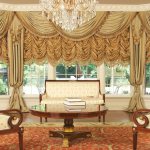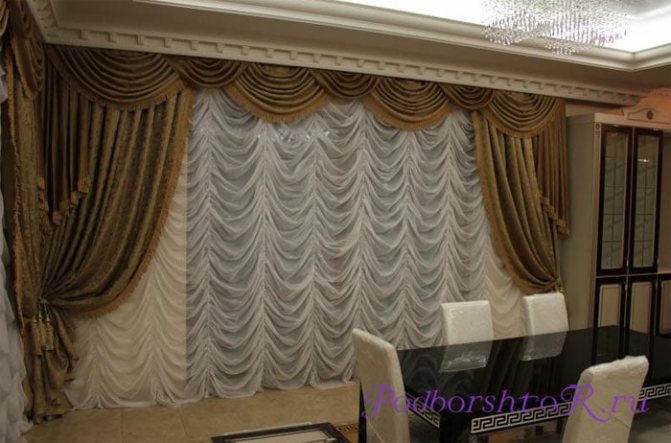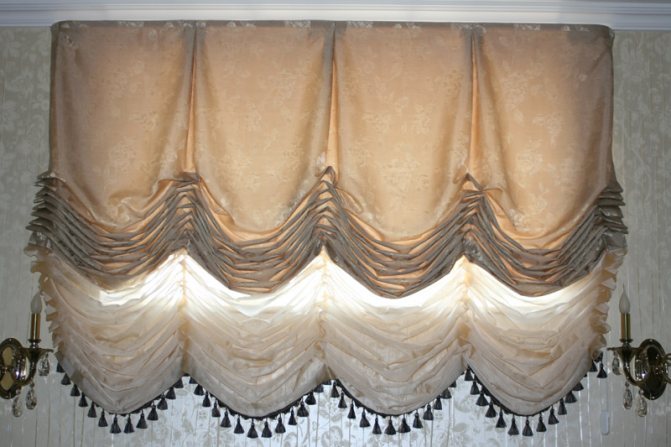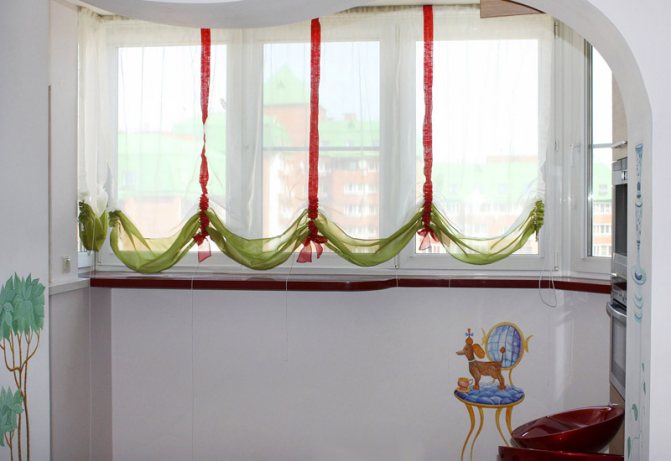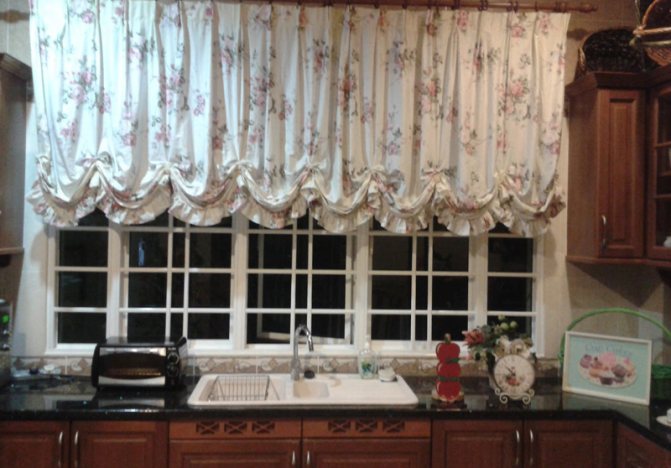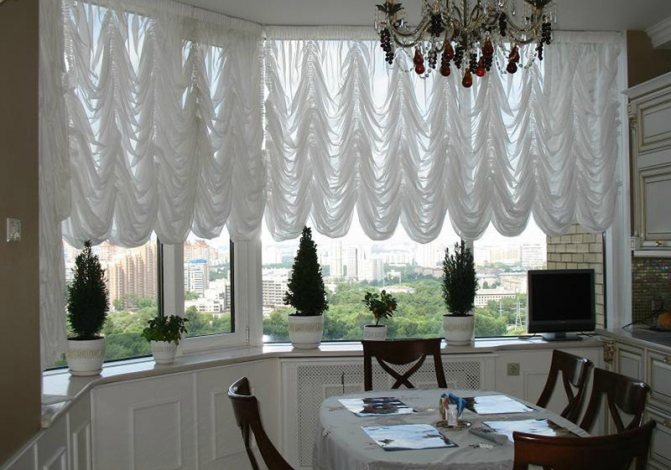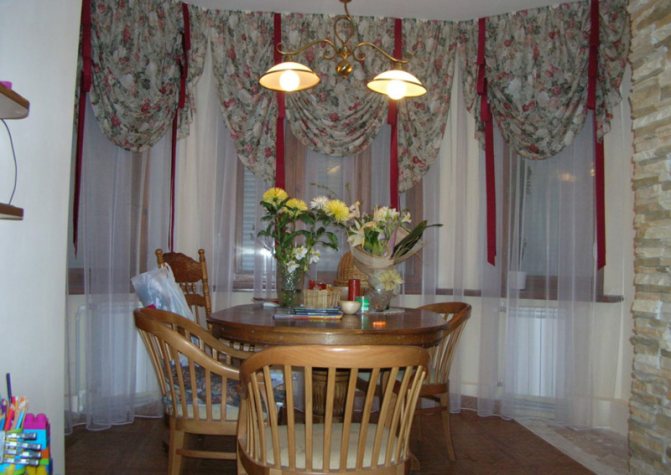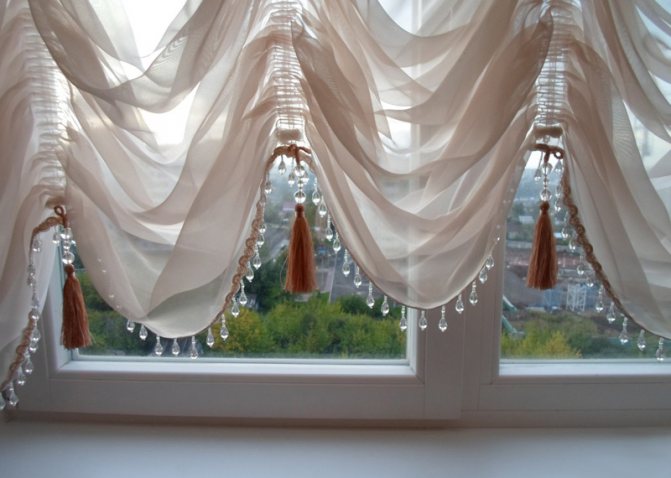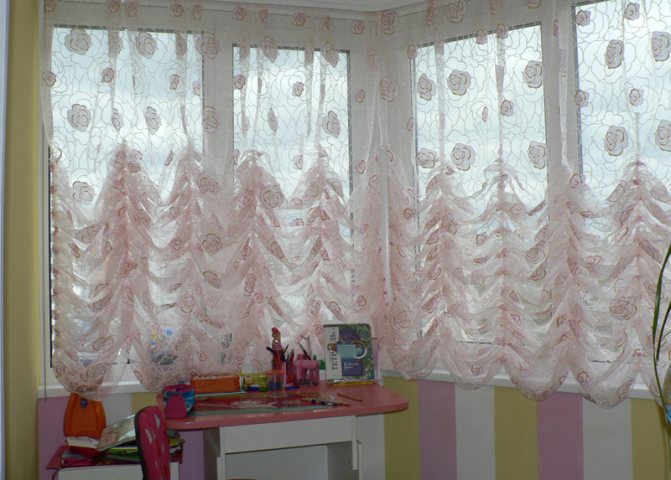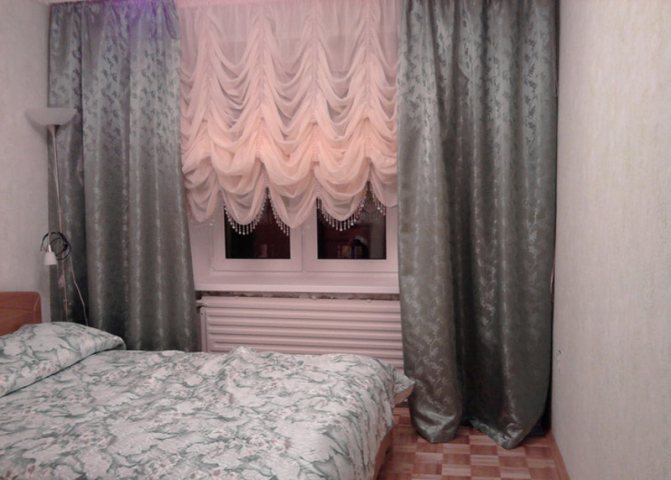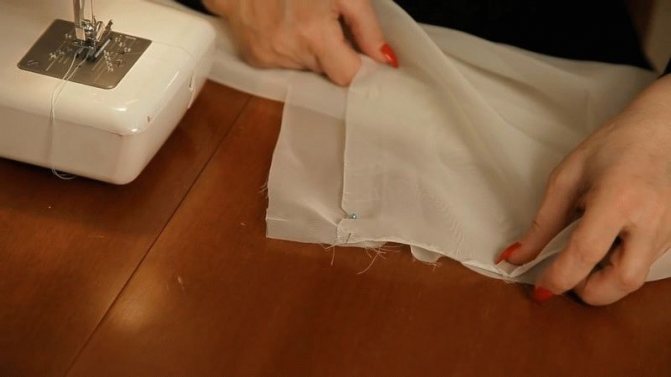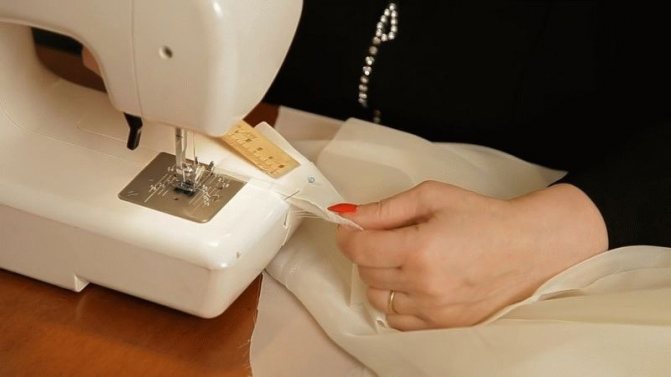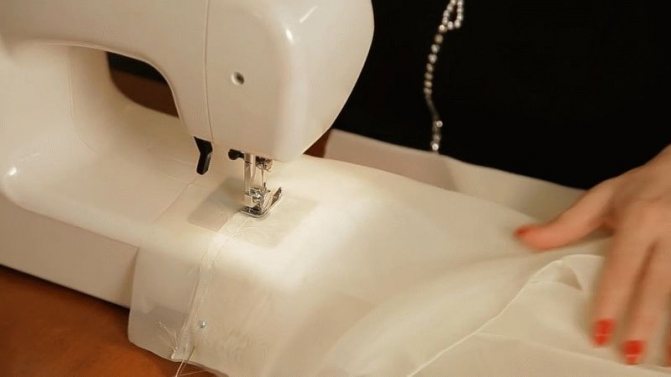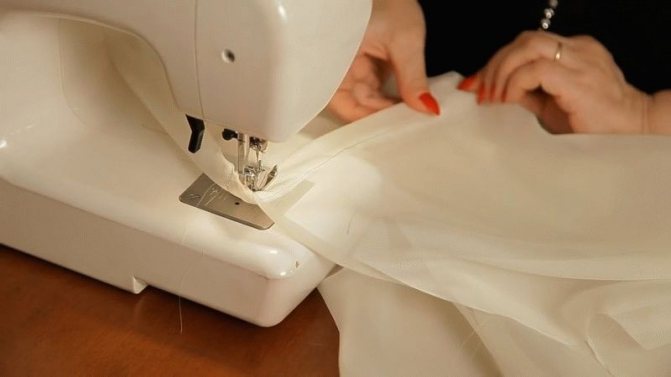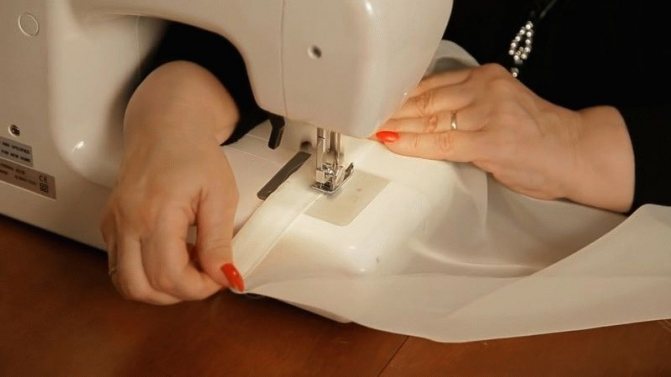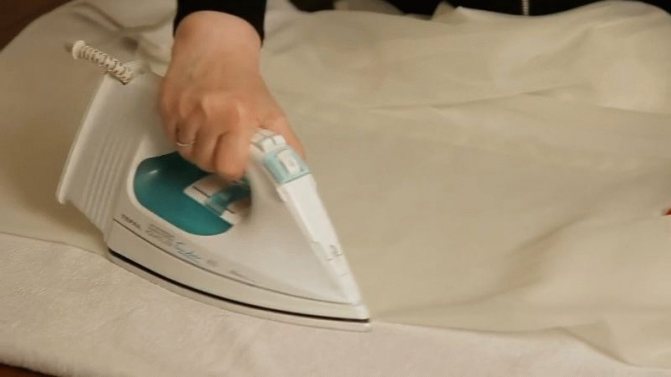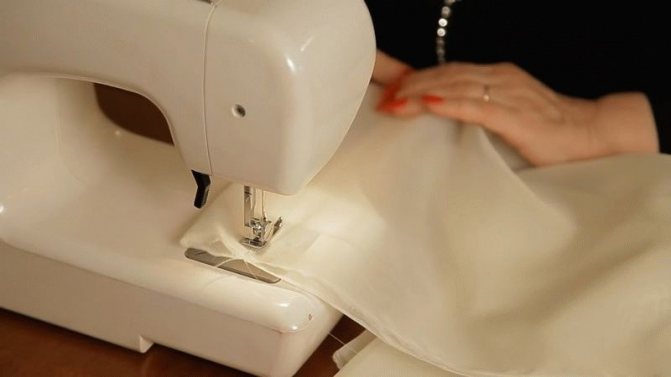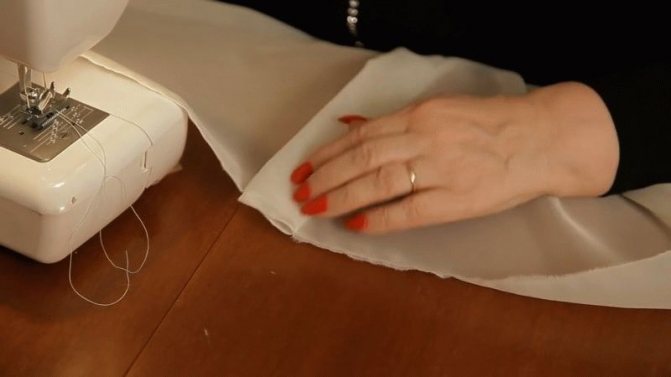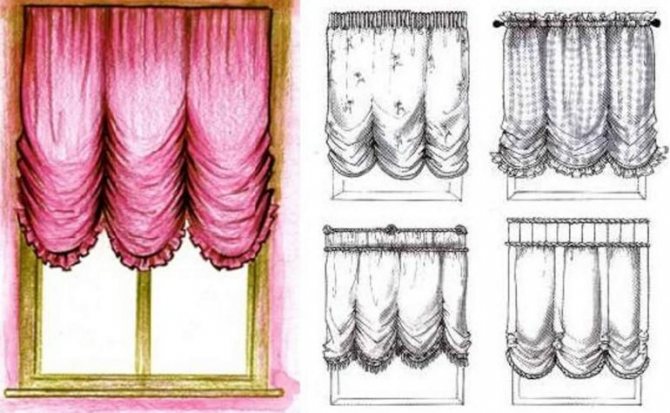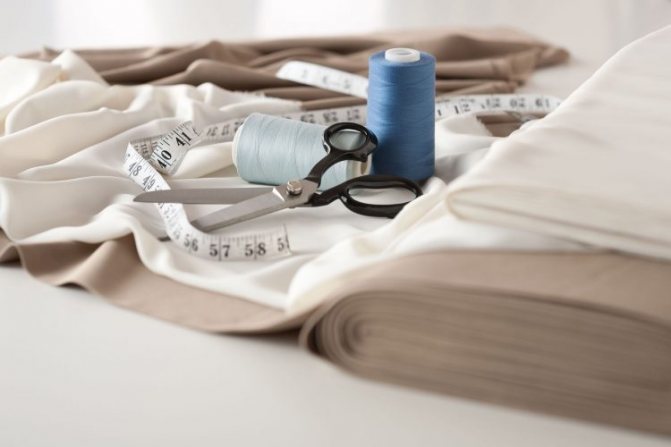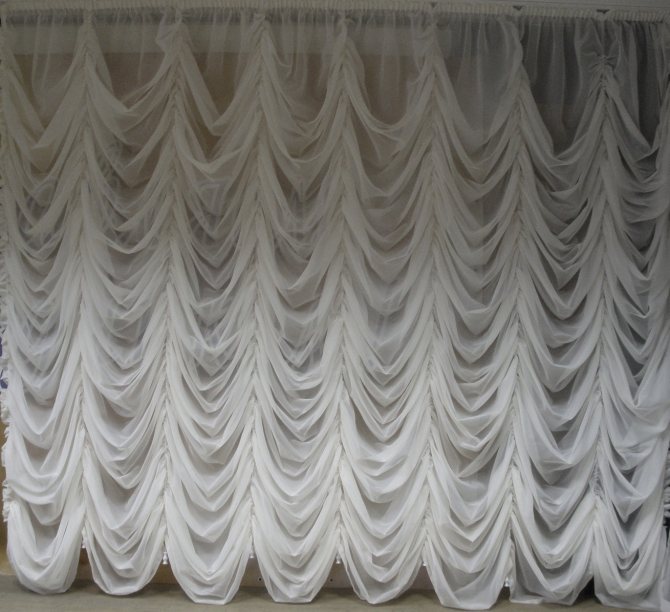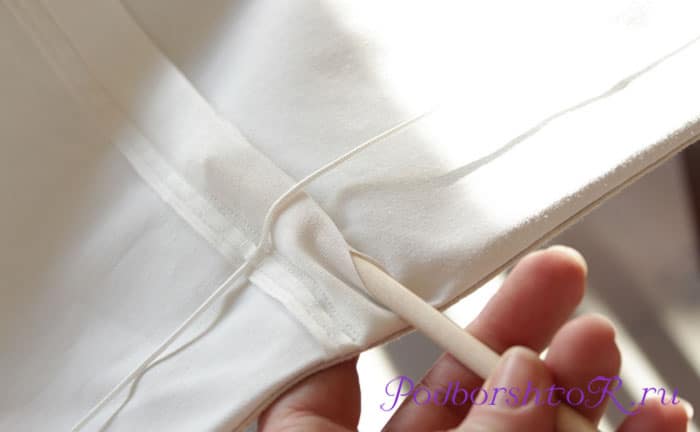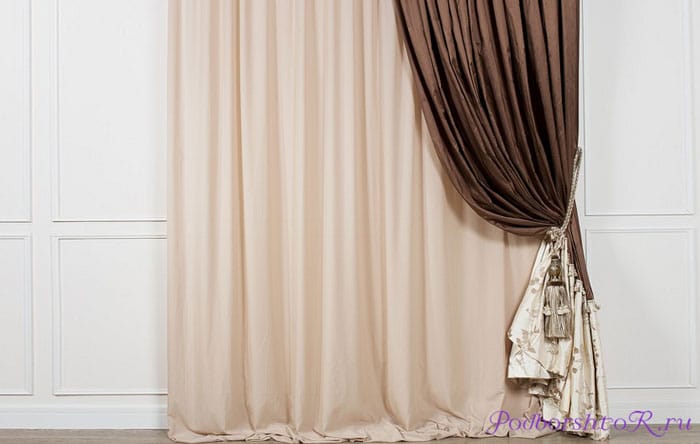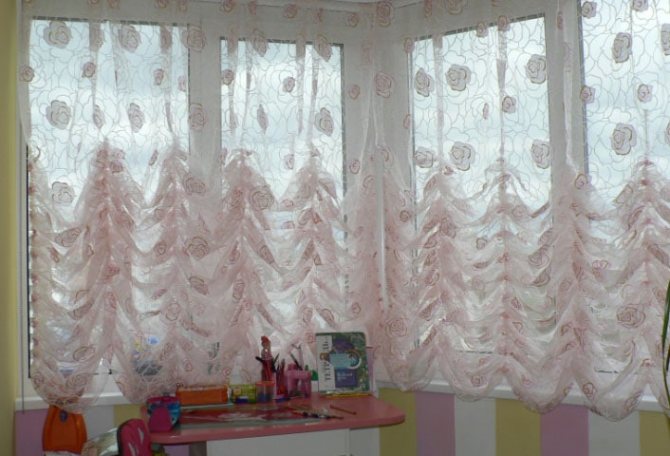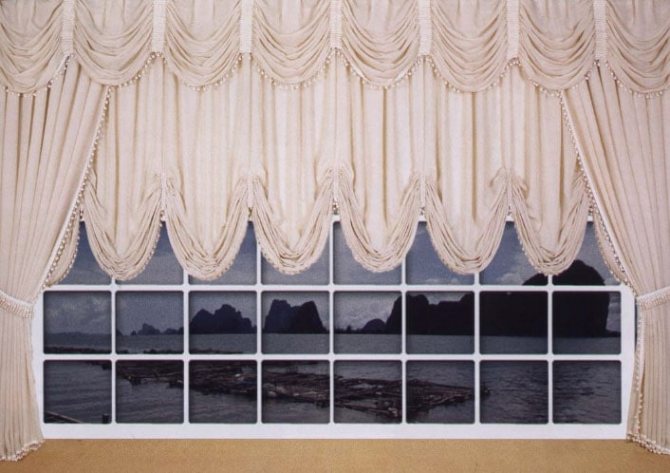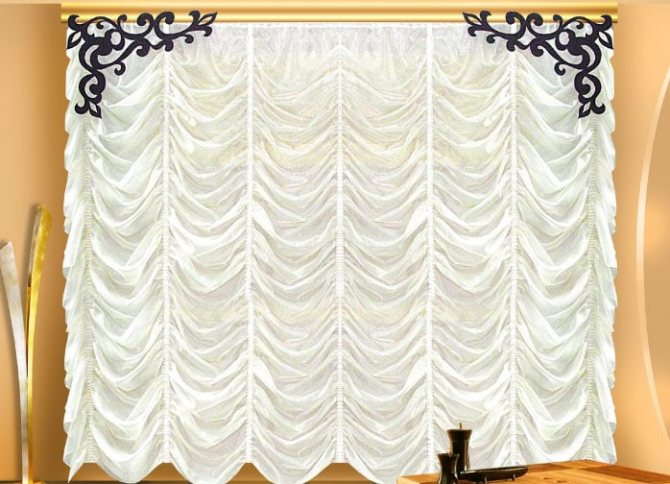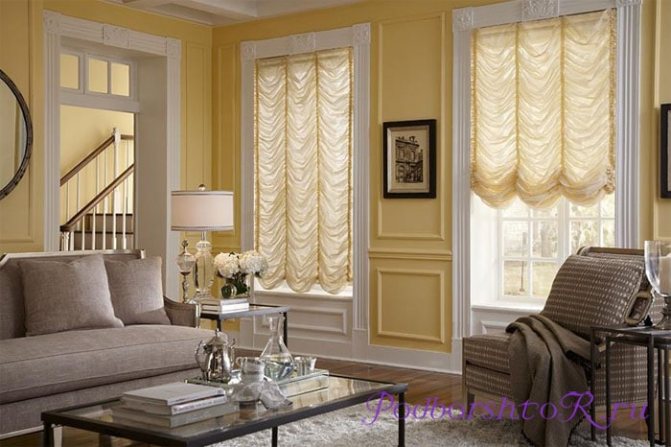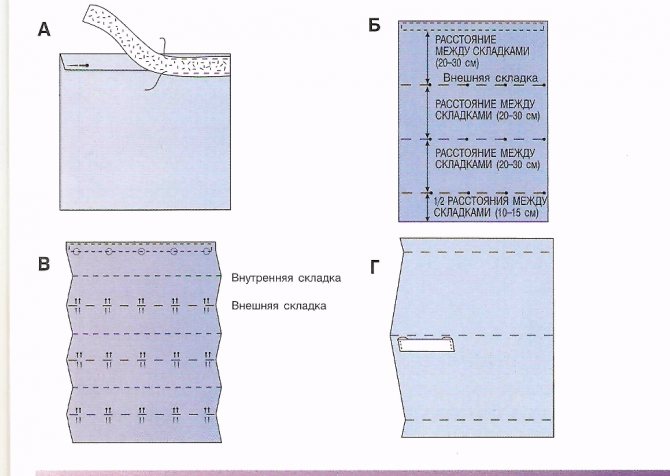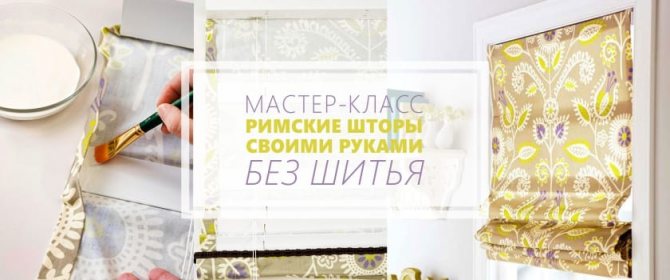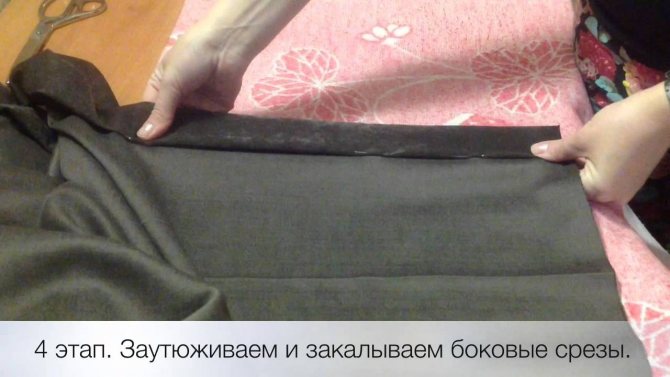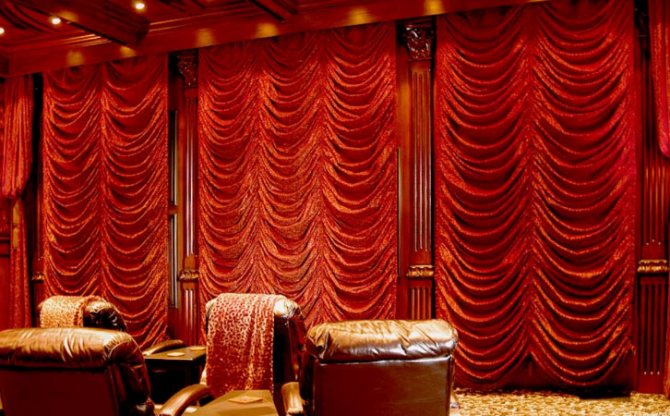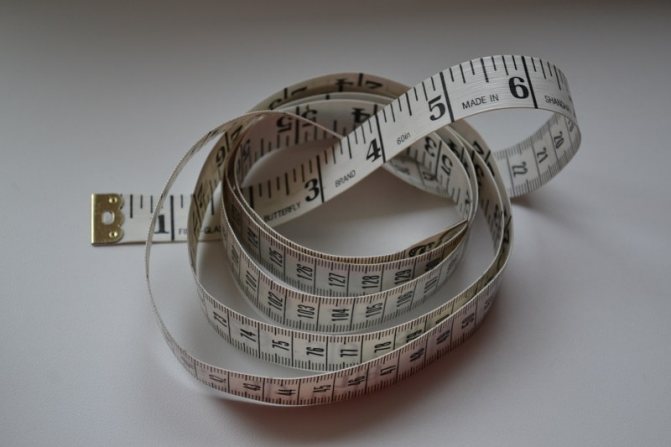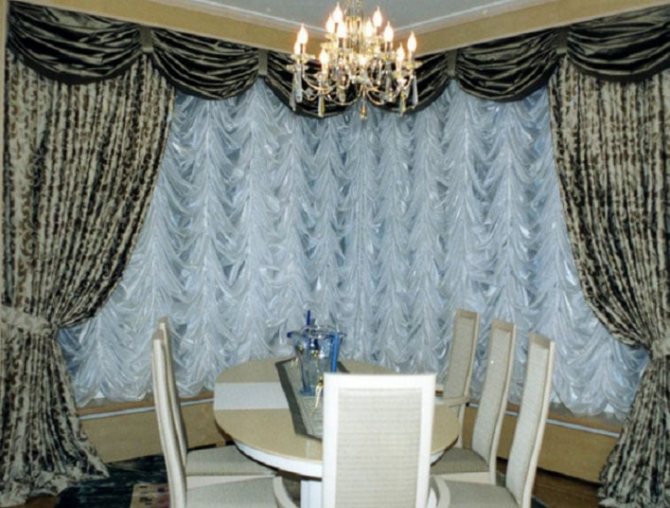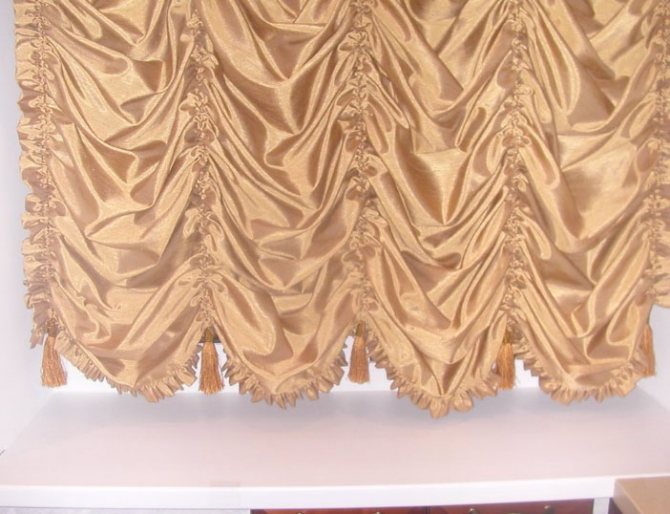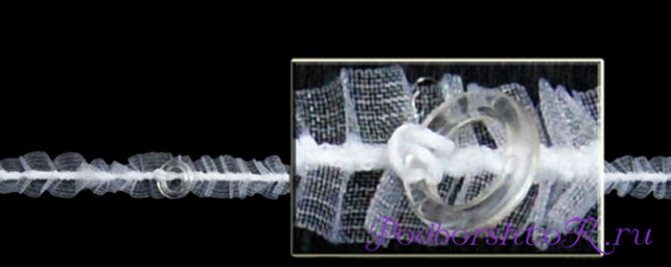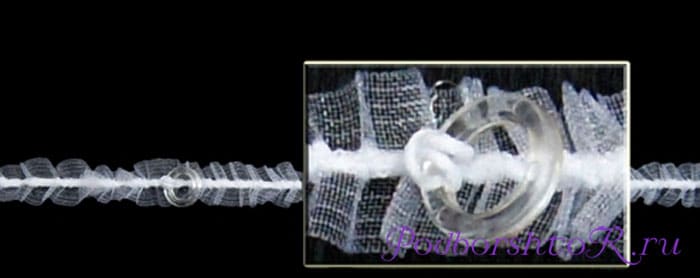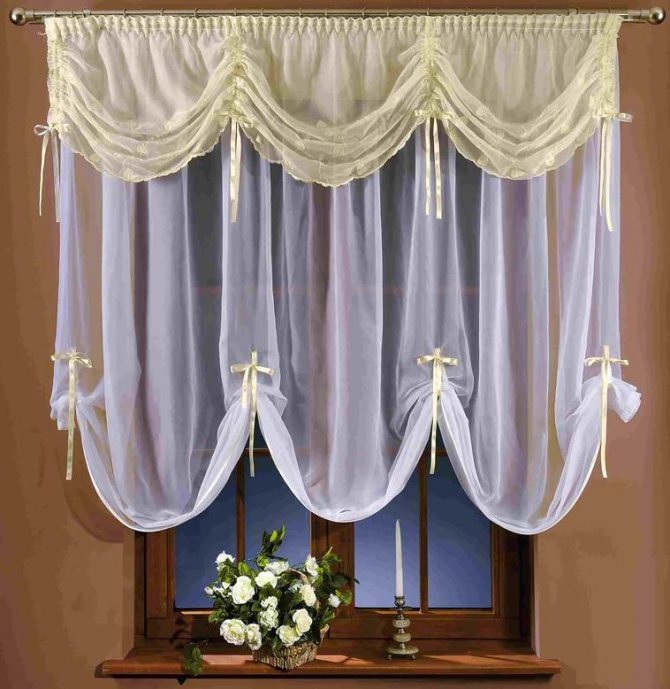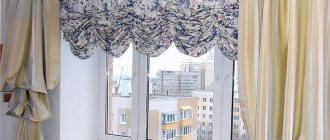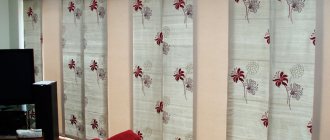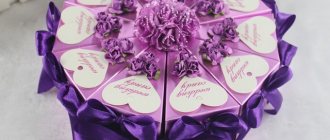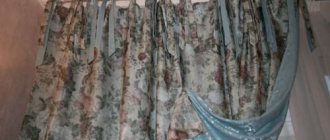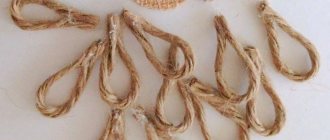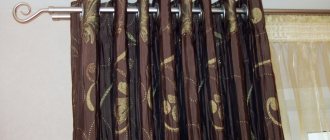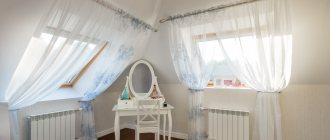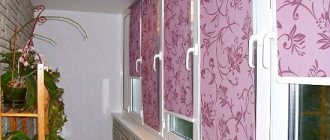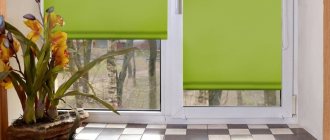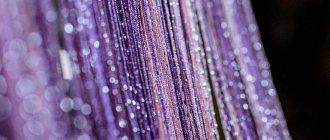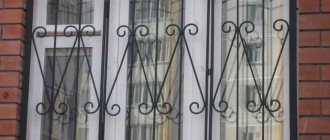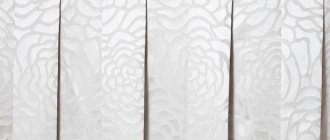Greetings, dear blog readers, craftswomen, needlewomen. Today I want to share with you how to sew French curtains with your own hands. Agree, it is the French curtain that is a stylish, functional and modern version of the curtain. Such a curtain is appropriate in any room: in the kitchen, in the bedroom, in the study and even in the living room. We will consider today an option under the romantic name "Marquis".
At first glance, it is quite difficult to execute, but after you read the article to the end, your opinion about the process of making French-style curtains will change. You will learn how to choose and calculate the required amount of fabric for work, cut and sew a curtain. Let's figure it out.
Curtain data history
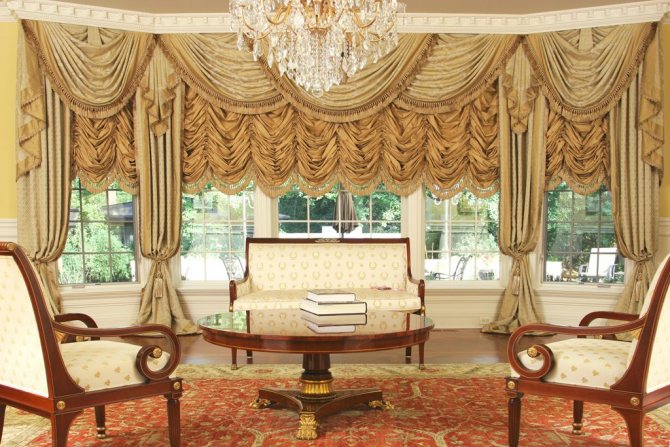
Pleated curtains are known as awnings. Curtains appeared in the era of classicism. They became widespread in the 14th century, during the reign of Louis XVII. Used to decorate luxurious palace interiors and houses of aristocrats.
A waterfall of air folds emphasized the status and taste of the owner. Awnings combine wealth, chic, laconicism and clarity of lines. Now, as in the past, curtains are used to decorate apartments, houses, restaurants and theaters.
Awnings
The length of the awning can be different - the curtain either covers only the window opening or goes down to the floor itself. French curtains will look good with lambrequins.
Such curtains are well suited for classic interiors, adding an extra touch of luxury to them. "Marquises" will decorate the ceremonial and banquet rooms. However, now you can buy French curtains of various designs. Among the wide selection, it is easy to find those curtains that will look good both in the kitchen and in the hallways.
Most often, you can find French curtains made of lightweight fabrics. In this case, light, delicate colors are mainly used. The fabric should be elastic - only in this case, even folds will remain. Classic "awnings" are made of dense heavy silk.
The easiest DIY sewing option
Sewing French curtains according to this instruction can be done pretty quickly. First you need to prepare the fabric, cut it out, overcast the edges. Further:
- outline the scallops at the same distance from each other;
- sew the braid along the lines of the mark;
- insert a cord into the seams along the edges, form folds;
- fasten the ends on top, tie at the bottom;
- sew on weights along the edges at the bottom.
You can make awnings for small windows in a master class in an hour or two. In the photo, they do not differ from complex options.
Mounting types
In order to securely fasten your elegant French curtains, you can resort to one of two types of fasteners to choose from:
- Using standard window curtain rods, on which the curtain is attached with hooks, clips or eyelets. Sometimes the curtain is mounted on a rod through a special tape sewn along the edge of the curtain.
- With the help of special curtain rods equipped with a mechanism for adjusting the length of the curtain. The curtain is attached to such a cornice with a self-adhesive tape. The mechanism is usually controlled using a remote control. This type of fastener is perfect for window openings of all shapes and sizes.
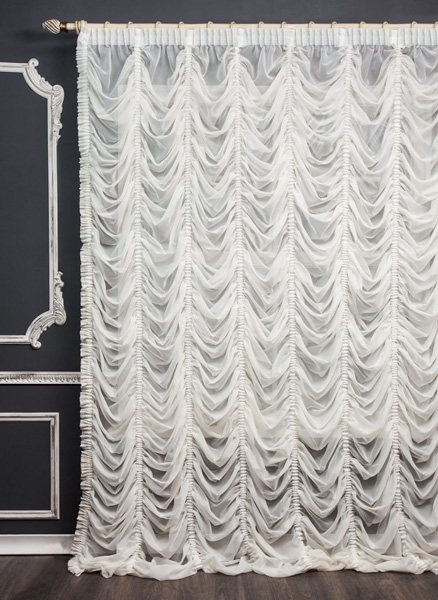

The choice of fastening largely depends on the desired final look of the curtains.
Fabrics from which these curtains are sewn
Sewing French curtains involves the use of natural, synthetic materials. Read more about popular fabrics below.
Linen
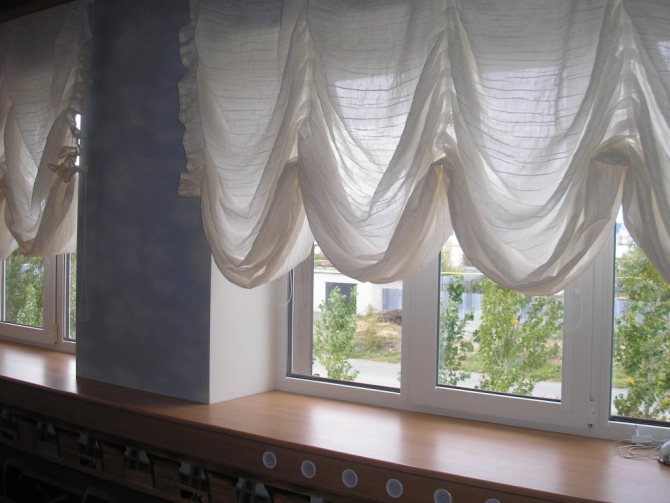

For awnings, natural linen or material with synthetic additives is suitable. Flax is environmentally friendly, durable, hypoallergenic. The disadvantages of the material are burnout, desiccation. Linen wrinkles quickly and loses color.
Velvet
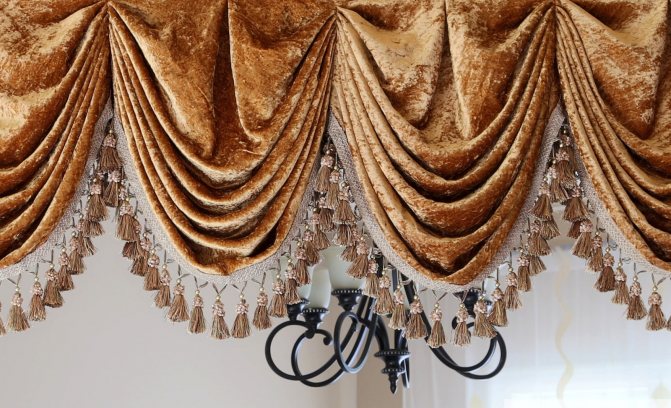

Suitable for the decoration of windows with a balcony door, living rooms, bedrooms, theater stages. Draped, shimmery softly, looks luxurious, popular for French curtains. Recommended for spacious rooms, finished curtains are heavy.
Veil
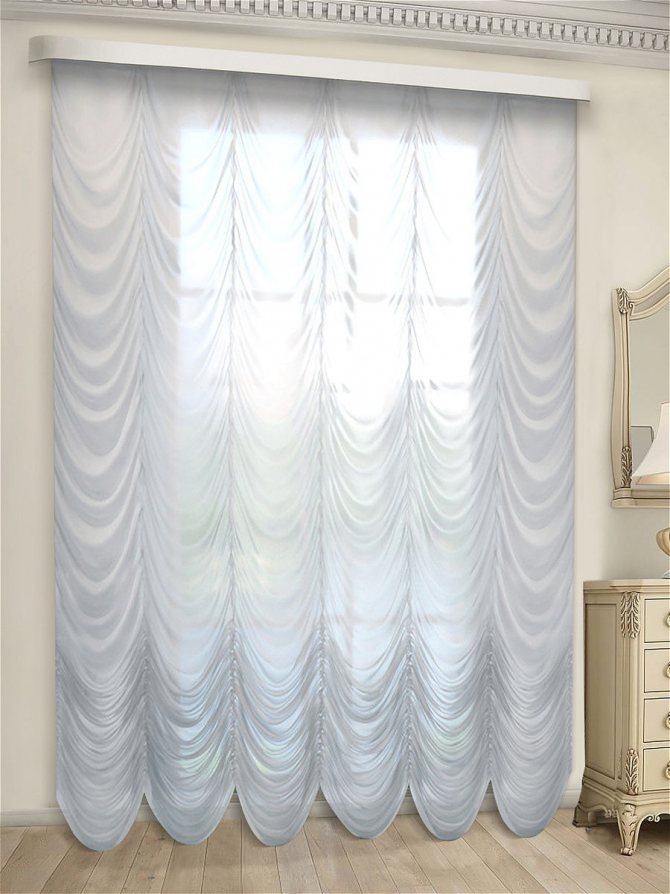

Semi-transparent fabric, made in the form of mesh or ruffle, is ideal for sewing French curtains. She perfectly knocks down, diffuses light, transforms the interior. Does not shine, hides what is happening in the house. It gets dirty quickly, accumulates static electricity, breaks easily.
Silk
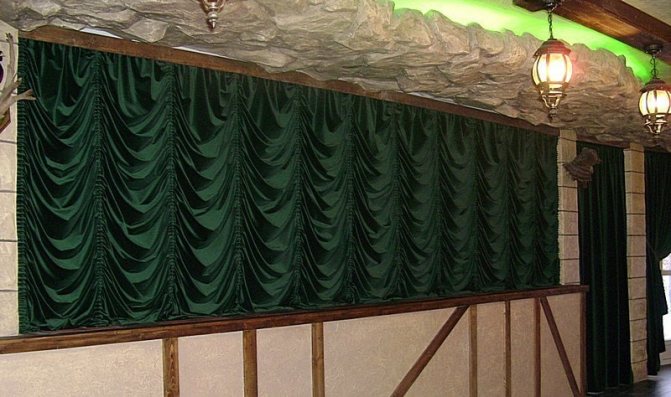

Silk pleated curtains look aesthetically pleasing, breathable, do not cause allergies, and are environmentally friendly. Differs in high drape, therefore it is recommended for sewing French curtains. The fabric is difficult to care for and is expensive.
Organza
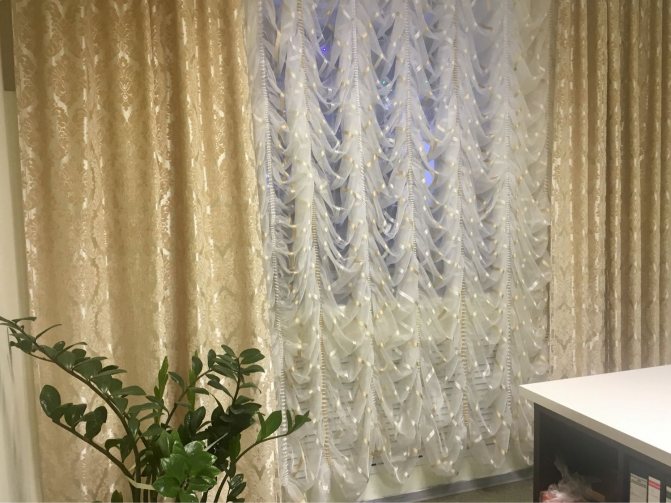

Shiny, translucent fabric that forms graceful folds. Suitable for sewing French curtains for the kitchen or dining room: it is easy to wash and dries quickly. Does not block the sun's rays, does not shade the room.
Satin fabric
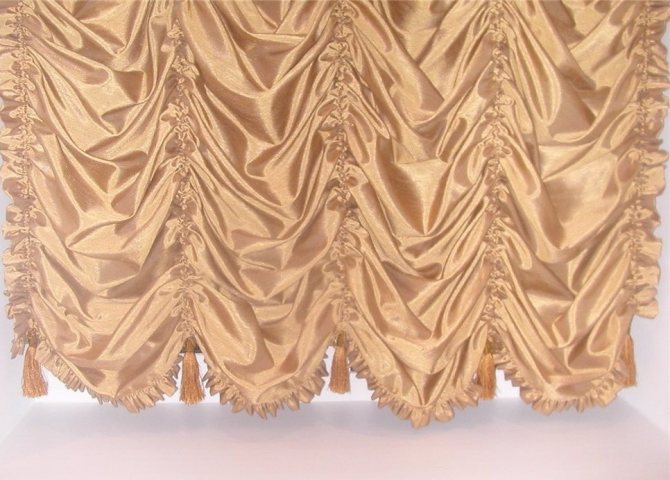

Forms beautiful shiny folds, is used when sewing awning curtains for rooms in classic style, art deco, provence. Looks great, drapes beautifully. It is expensive, implies difficult care.
Color selection
It is very important to decide on the color of the material that will help you sew incredibly beautiful curtains. The curtains of all pastel colors look the most harmonious:
- Pale pink;
- Peach;
- Vanilla;
- Pistachio;
- Jasmine;
- Tea rose;
- Sand;
- Creme brulee;
- Milk chocolate;
Bright flashy tones are absolutely inappropriate in the design of French curtains; these curtains already look quite pretentious and attract everyone's attention with their lush assemblies. Therefore, in a rich performance, they can look tasteless and clumsy, which can significantly spoil the overall design of the room.
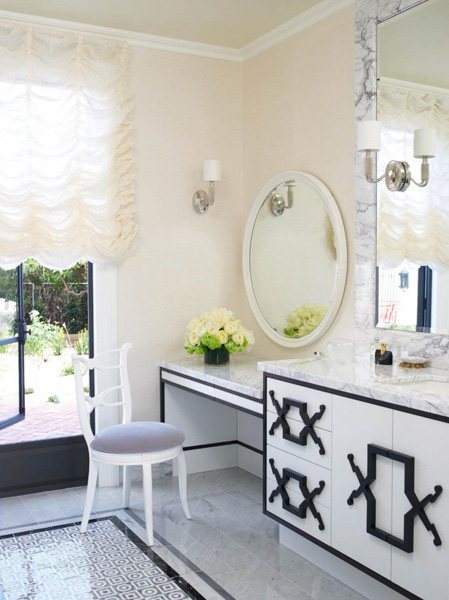

Photo of the most delicate French curtains in pastel colors
How to choose colors
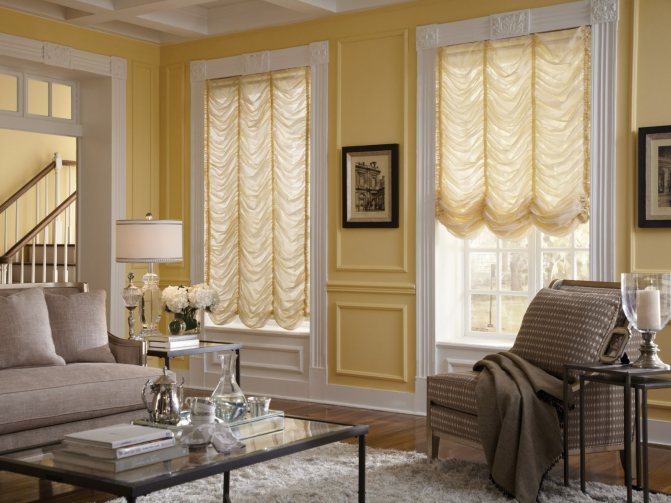

The color of the curtains with folds is selected according to taste. The shade can be in contrast or combined with:
- decoration of walls, ceiling, floor;
- color of furniture facades;
- the texture and shade of the curtain rod for awning curtains;
- other textile elements.
A large print can be distorted due to folds, a small repeating pattern or plain fabric is recommended. Tiny flowers, geometric patterns, golden symbols look good.
Required skill level
Awning curtains differ among themselves not only in color, method of fastening and static, but also in the shape of scallops (falling folds). For example, if a dense and heavy fabric is used for sewing, then the folds will have a rounded appearance and a large degree of sagging. Lightweight and well-fitting fabric will help create fluffy, little sagging scallops.
Sewing this type of window drapery is not difficult, however, it is better for a novice craftswoman (master) to opt for a static version, which will not rise or fall, but will perform a purely decorative function.
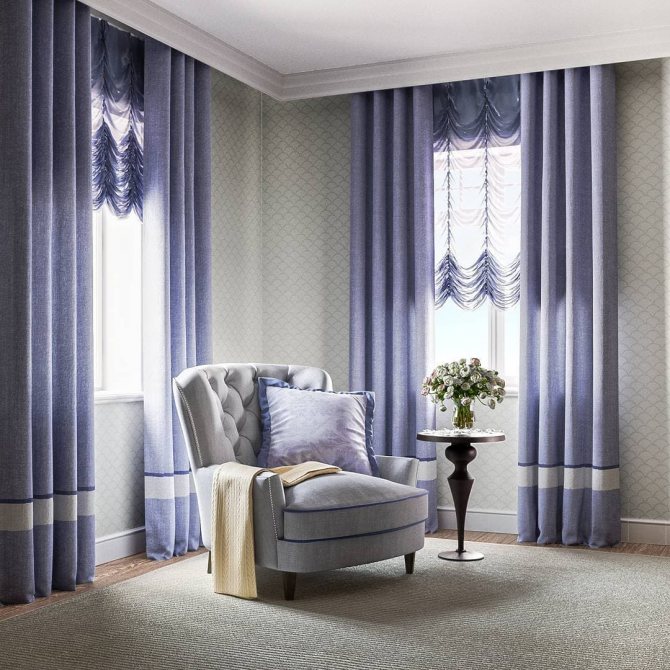

aura_home_com
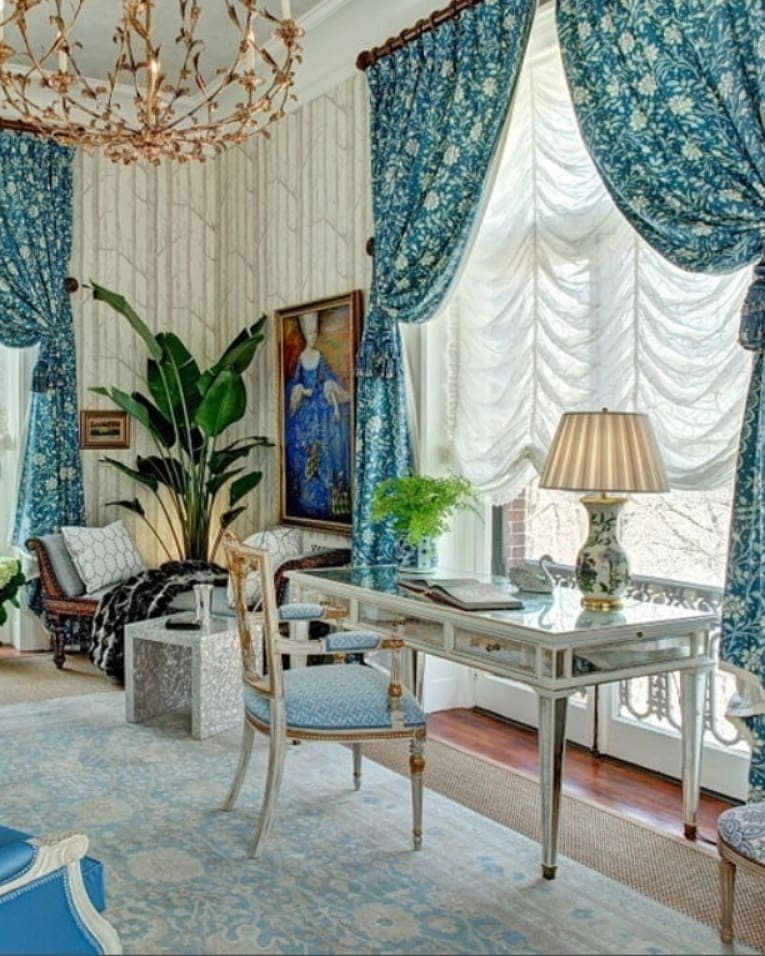

assem_nurlybayeva
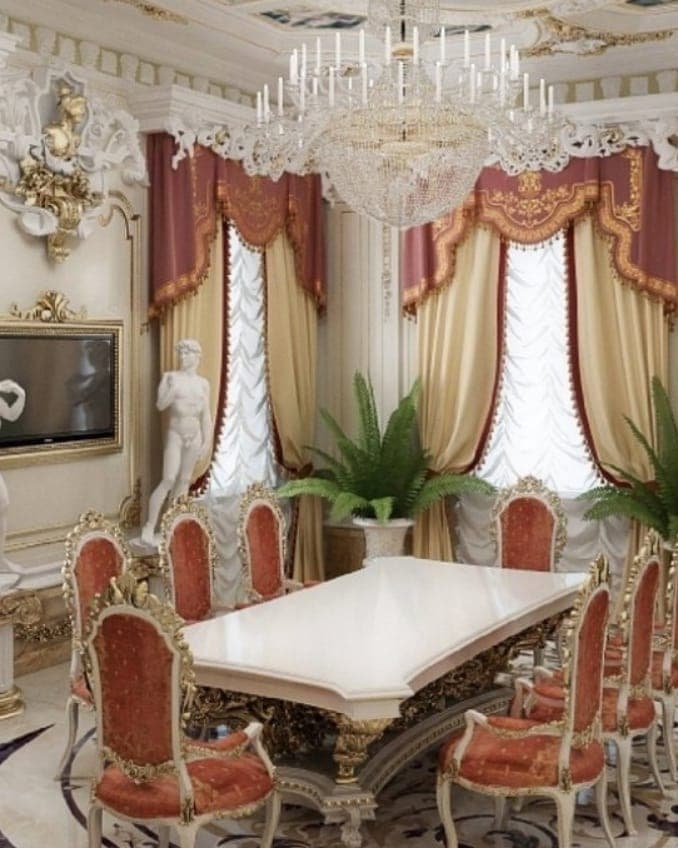

Curtain care
Washing and ironing pleated curtains is difficult. Curtain maintenance includes:
- removing the curtain from the cornice board;
- neat straightening of the canvas by pulling the threads;
- washing in accordance with the mode suitable for the selected type of fabric;
- ironing at low temperatures.
It is better to replace ironing with steaming, and washing with dry cleaning. In this case, the curtains will remain lush for a long time, and the scallops will be neat. Do not machine wash the product. Better to combine soaking and hand care.


Which material to choose
Having calculated the length and width of the material, you need to choose the one that is suitable for the drapery. It should be elastic, and the folds on it should be smooth, even and soft. Choosing a cut in the store, you can try to collect a little canvas in your hand and see if the fold lies beautifully, whether it forms even waves. If it is bent, looks wrinkled or crooked, it is better not to choose this.
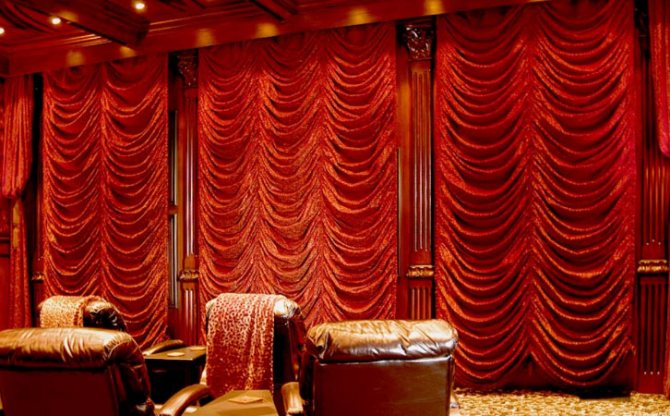

Traditionally, for sewing French curtains, they choose either light transparent fabrics, for example, tulle, organza, fine silk, or soft opaque fabrics with a smooth texture, but always thin: satin, cambric or moire.
What you need to work
When you look at the numerous scalloped rows and lifting cords, it may seem that sewing French curtains with your own hands is a difficult job that only a professional dressmaker can do. In fact, this is not the case.
Expert opinion
Romanova Ksenia Petrovna
Interior design expert and head of a fabric salon
If you have at least some initial sewing machine skills, and you try to make all the seams even and neat, you will succeed.
For French curtains you will need:
- Lightweight translucent fabric. We have this white organza. But you, depending on the place where the future curtain is supposed to hang, and the interior features, you can choose any other. The main thing is that it is not too dense and well draped.
- Special curtain rod for lifting curtains. Such a cornice is already equipped with everything you need: a lifting block, cords, weights, but in its absence, you can do with an ordinary wooden beam with a section of 4X5cm. Sticky curtain tape is glued to it, and the beam itself is nailed to the ceiling. Moreover, such a homemade cornice will cost an order of magnitude cheaper than an expensive lifting product;
- Cord and rings or ready-made braid with rings, which can be purchased at a sewing supply store;
- Tailor's scissors, centimeter, thread matching the fabric by color and number, pins, Velcro curtain tape.
Different types of mechanisms
Despite their lush appearance, French curtains have an ingeniously simple design.
For their manufacture, a one-piece canvas is used. Cords are passed through the rows of loops on the seamy side. If you pull on them, the fabric folds itself into soft folds, forming scallops at the bottom.
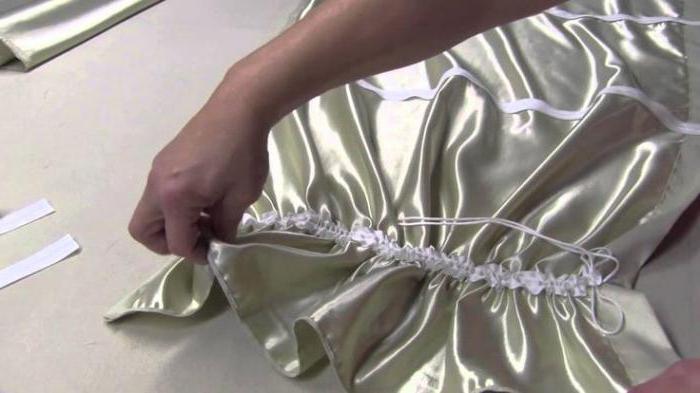

Curtains can be:
Static - fixed motionless.
They do not move to the side, do not rise or fall. Such curtains are usually sewn from chiffon, organza and other translucent airy fabrics. They are intended for decoration only and replace tulle. Lifting are functional.
They are designed to shade a room. They can be lifted using a lifting mechanism and secured with a latch. At the same time, the curtains gather even more into lush folds, hanging down in beautiful "bunches".
French curtains should not be confused with Austrian ones. The models really look like curvy folds, the principle of the lifting mechanism, a solid canvas.
French curtains have beautiful folds along the entire length of the canvas. Even if you lower the curtain to its full length, it will retain its folded splendor. Austrian curtains are gathered in folds in the lower part.
